In 1666, London was devestated by the Great Fire of London. This year marks 350 years since the event, so the city has hosted a range of walks, art installations, illuminations on St. Paul's Cathedral, a wooden replica of old London burned on the Thames, a fire garden, and other fire-related events across the city. In addition to these events, the Museum of London has a special exhibition on the Great Fire, dubbed Fire! Fire! I popped along at the end of last month in order to see it.
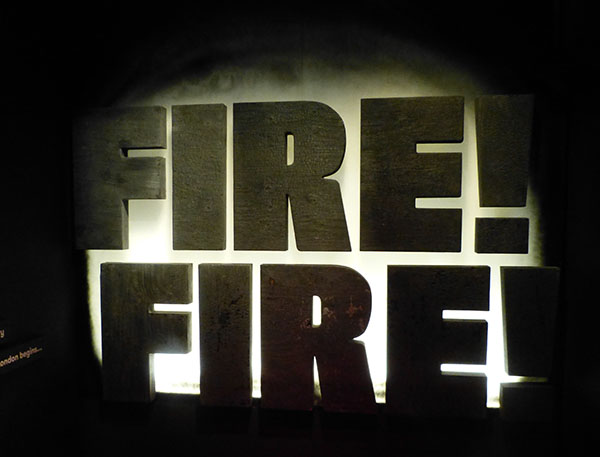
Fire! Fire! has a range of exhibits for all ages, and some of these are geared more to younger visitors. The first mention of the fire was through predictions drawn by William Lilly in 1651. The drawings included a burning city and depictions of twins hanging under flames (Lilly was an astrologer and claimed that the star sign for the city is Gemini).
This room also showed how London's buildings used to look with upper stories leaning outward and over the streets.
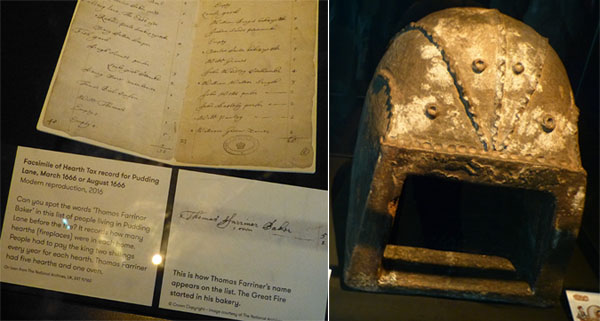
Tax record for Farrinor and an example of an oven
Next up was a depiction of the bakery of Thomas Farrinor on Pudding Lane where the fire started. In this room were images of bread and Thomas Farrinor's signature in a tax record. In those days, people were taxed on the number of fireplaces they had; they had to pay the king 2 shillings per each fireplace. Thomas Farrinor has five plus the oven. An smaller example of an oven similar to the one in the bakery was on display.
Another display featured an example of the Gazette newspaper, which published a morning paper about the fire. By later in the day, the newspaper office had burnt down. Letters written to others about the fire were on display, and these were recorded so that we could listen to them.
The most interesting of the exhibition werre the items that claimed to have come form the fire (been saved) or replicas of items that were discussed in documents. Some of these were passed down in families. The items saved included books, expensive items, and wooden tally sticks that kept track of debts that others owed them.

A trunk used to carry items; this would have been heavy and many people would have paid people to carry it for them
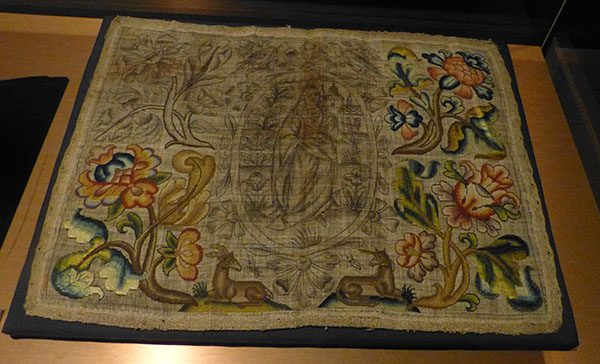
This unfinished embroidery was saved from the fire; many girls from wealthy families made these, but it is not known why it was never finished
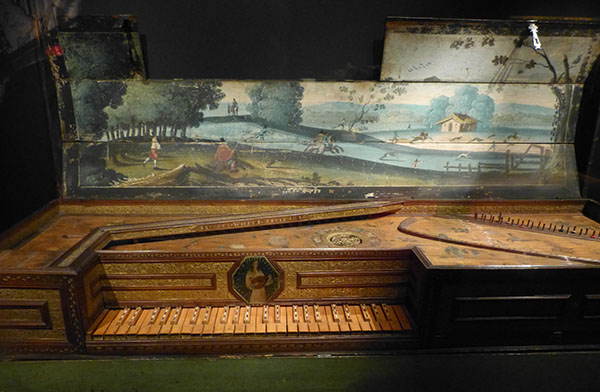
This was an expensive item in the day and was similar to a piano; a writer described seeing one in four boats on the river carrying this item to safety during the fire
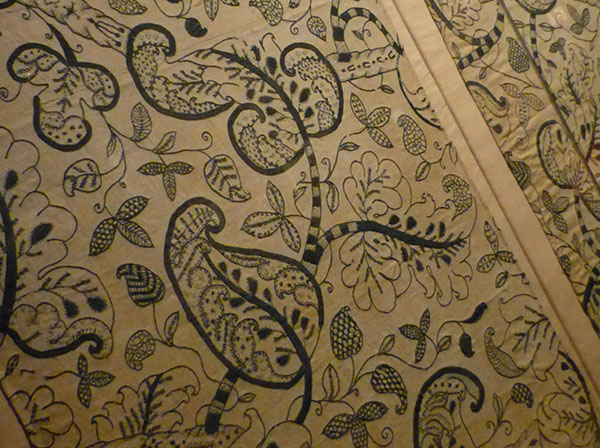
This pair of curtains for a poster bed was saved
Another group of items showed tiles, bricks, and glass that had been melted and warped by the flames. Microscopes allowed visitors to look through to see what the ashes looked like close-up.
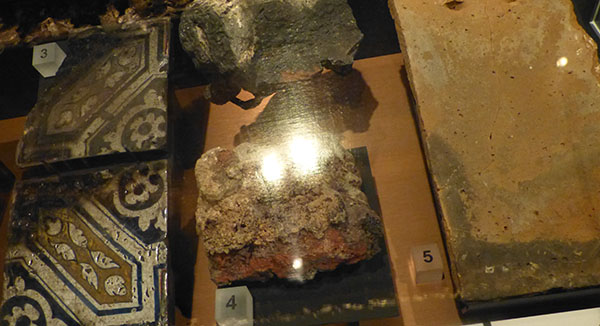
Another area showed items from the original medieval St. Paul's Cathedral. St. Paul's Cathedral was undergoing building work at the time and had scaffolding around it, which probably helped it to catch fire and burn.
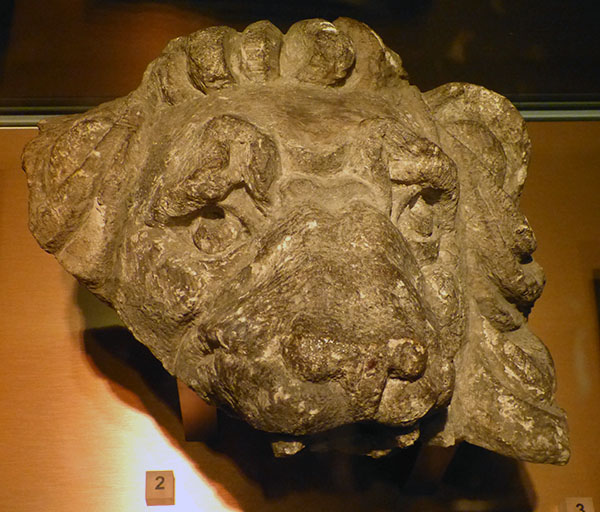
This lion's head probably came from a newly-added porch
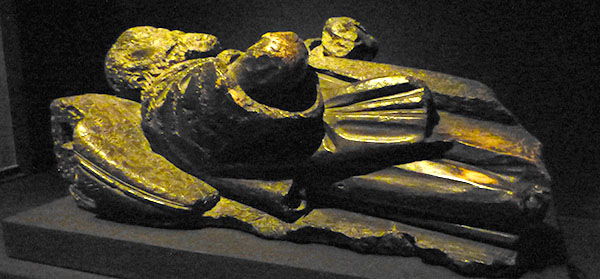
The charred remains of a tomb; I forget whose it was, but a book had a photograph of the whole tomb and wall settings
Other tombs in the cathedral had been burnt or had been opened by the fire to reveal the bodies of the dead. One of them was a Bishop of London, and his body was mummified and other Londoners flocked to see it. Another one had broken open during the fire, and the coffin was discovered. The body was close to 150 years old and the coffin contained liquid; the men who discovered the coffin tasted the liquid (why would you even do that?) and poked the body with a stick.

A description of the open tombs
The next part of the exhibition explained what types of equipment were used for fighting the fire. Even the King joined in and also paid people to assist in the fire fighting. The equipment for fire-fighting tended to be owned by the area church and shared in that community. Leather buckets were stored for throwing water; squirters were metal 'pumps' that could be used to squirt water onto the fire. Long poles with hooks on the end were used to tear down the buildings to prevent the fire from jumping from one building to the other. Dynamite was also used to demolish buildings to control the spread of the fire.
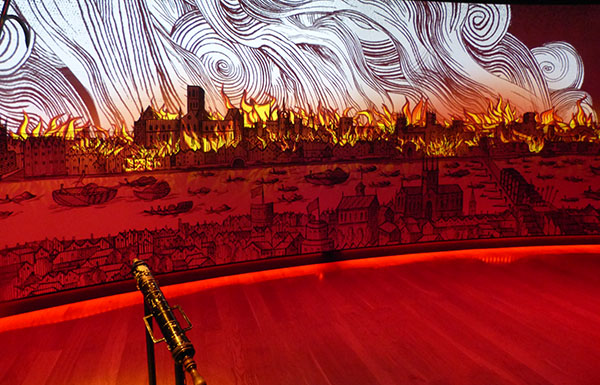
The burning London skyline is interactive with a squirter and other fire-fighting equipment and costumes that children could try on
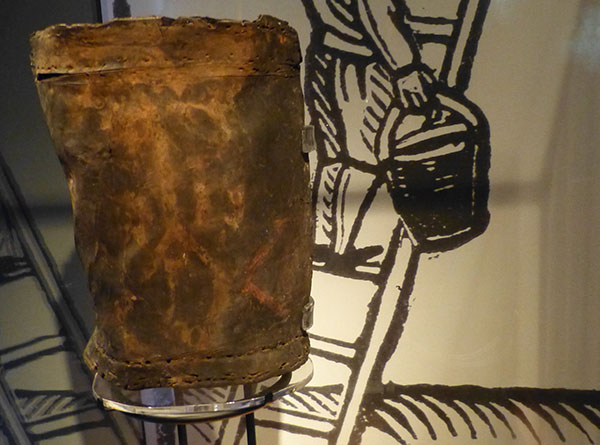
This leather bucket was discovered in the cellar of a demolished building; it has the initials of one of the churches on it
There were also stories of how a bunch of children saved a good portion of one of the churches from being completely demolished.
The next area discussed the aftermath of the fire and the measurements put into place to prevent another fire. These included setting up a body to help with fires in the future and providing the necessary equipment. The below is a fire tank, and the wooden wheels and handles had been recently added because they were missing. One person would stand on each end and lift the handles back and forth to pump the water; it is an early example of what a fire engine can do.

Early water pump
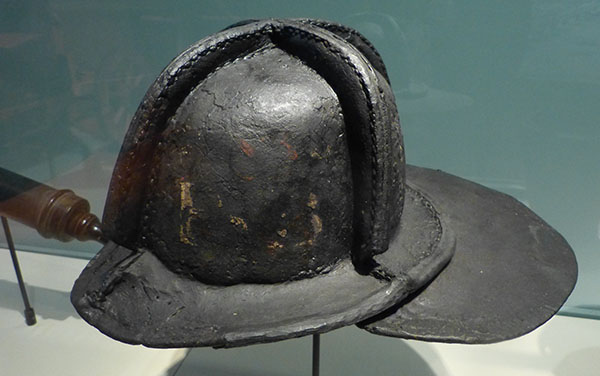
Fire fighter helmet
Before this time, insurance also did not exist. That means that so many people lost everything and were displaced; this rebuilding and loss would have gone on for more than one generation and some of these people left London and never returned. After the Great Fire, firms were set up to deal with insurance.

The below marks can be seen on buildings in London; these are insurance marks
Another section in this room discussed who was accused of starting the fire. The fire was blamed on foreigners who were trying to weaken London to start a war. A local man man tried to claim responsibility. A young boy tried to claim responsibility for throwing flames into houses with his uncle. The different religious groups blamed each other. The religious groups also blamed London's gluttony and published sermons to bring the city back from sin. The foreign countries had their own theories, and some suggested it was punishment due to England wanting war with others.
This room also contained some items found in the fire, including a hoard of broken glass bottles from a glass shop. These were discovered in the cellar and had beautiful designs and colours. Another shop had a lot of broken crockery. Also scattered amongst the remains were loads of locks and keys. The fire was so hot that the locks had fused together, bubbled up, and rusted. Each of these locks/keys was on display with an X-ray image.

Delicate glassware discovered in a cellar
The last room on the tour was dedicated to re-building the City. There were many alternative plans, such as using a grid layout with right angles or creating large avenues and focal points to mimic the stylish French cities. These alternative plans for re-mapping the city of London were not used because they would take too long. In the end, London used the old layout of the City and street names.
Different bodies of government were set up to protect tenants who were being cheated out of rent or being expected to pay even though the building had burnt down. Rent outside the burned area of London also increased, and those who lost everything had a hard time.
The final section showed Wren's plans for St. Paul's Cathedral, including one example that he had for the famous dome. It wasn't the finished design for the dome, but it looks similar.
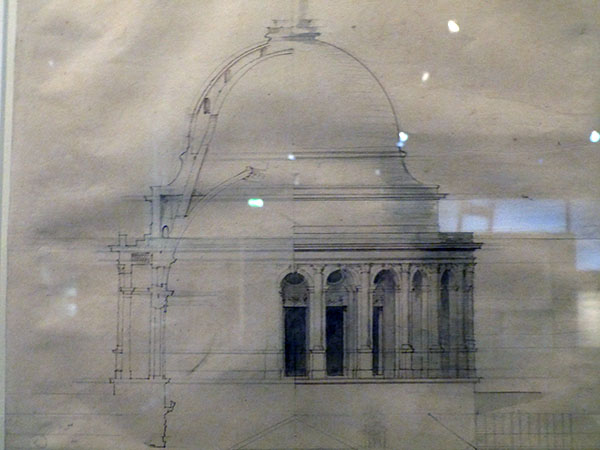
Drawings of dome
Fire! Fire! is on at the Museum of London until April 17, 2017.
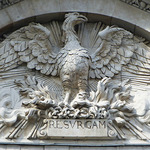
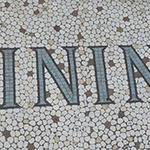

Leave a comment